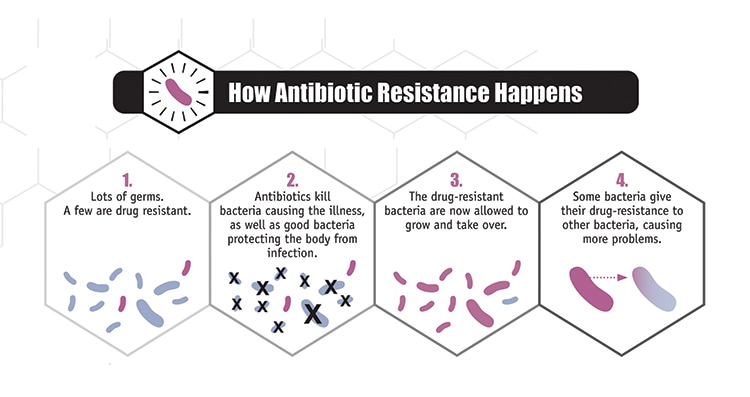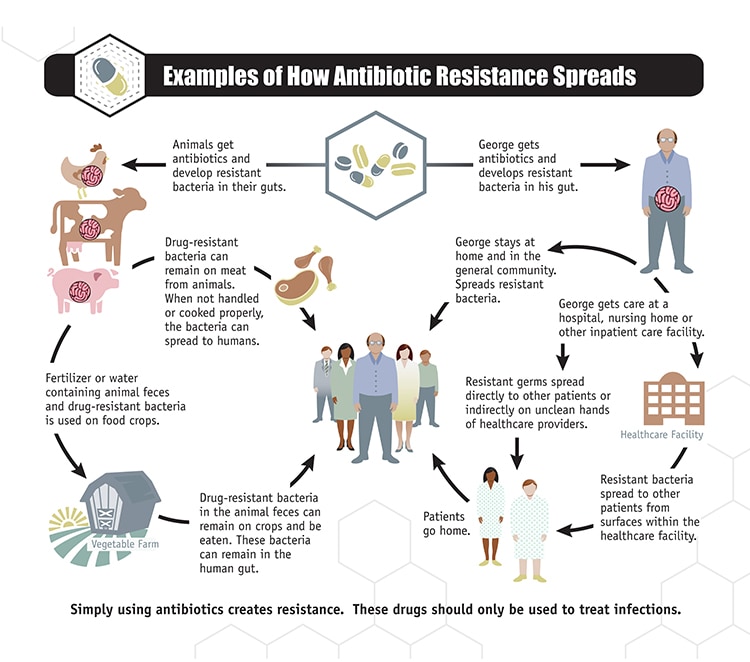How Resistance Happens
Simply using antibiotics creates resistance. These drugs should only be used to manage infections.
Trends in Drug Resistance
- Antibiotics are among the most commonly prescribed drugs used in human medicine and can be lifesaving drugs. However, up to 50% of the time antibiotics are not optimally prescribed, often done so when not needed, incorrect dosing or duration.
- The germs that contaminate food can become resistant because of the use of antibiotics in people and in food animals. For some germs, like the bacteria Salmonella and Campylobacter, it is primarily the use of antibiotics in food animals that increases resistance. Because of the link the between antibiotic use in food-producing animals and the occurrence of antibiotic-resistant infections in humans, antibiotics that are medically important to treating infections in humans should be used in food-producing animals only under veterinary oversight and only to manage and treat infectious disease, not to promote growth.
- The other major factor in the growth of antibiotic resistance is spread of the resistant strains of bacteria from person to person, or from the non-human sources in the environment.
























.png)











No hay comentarios:
Publicar un comentario